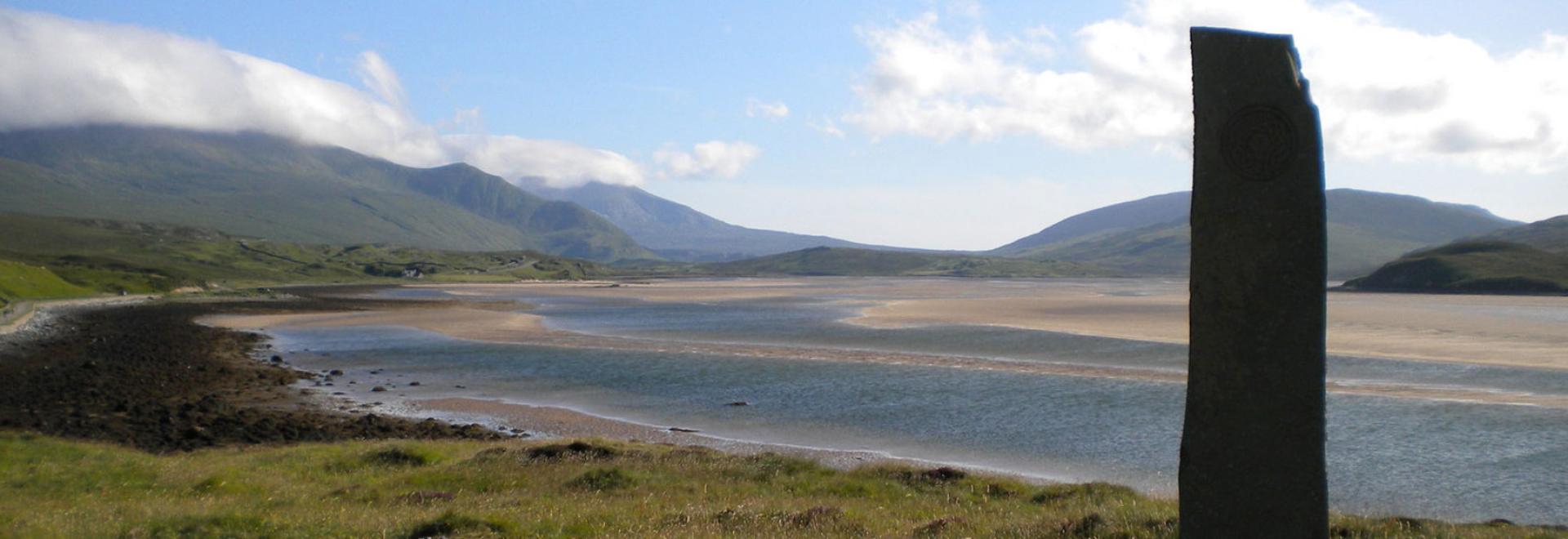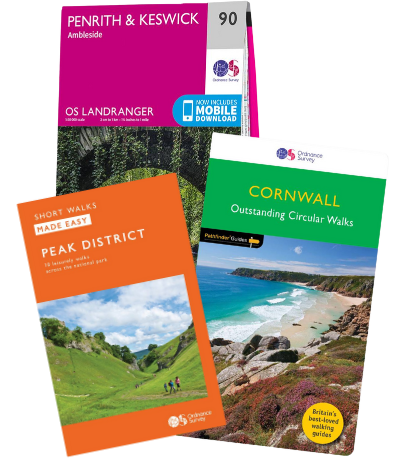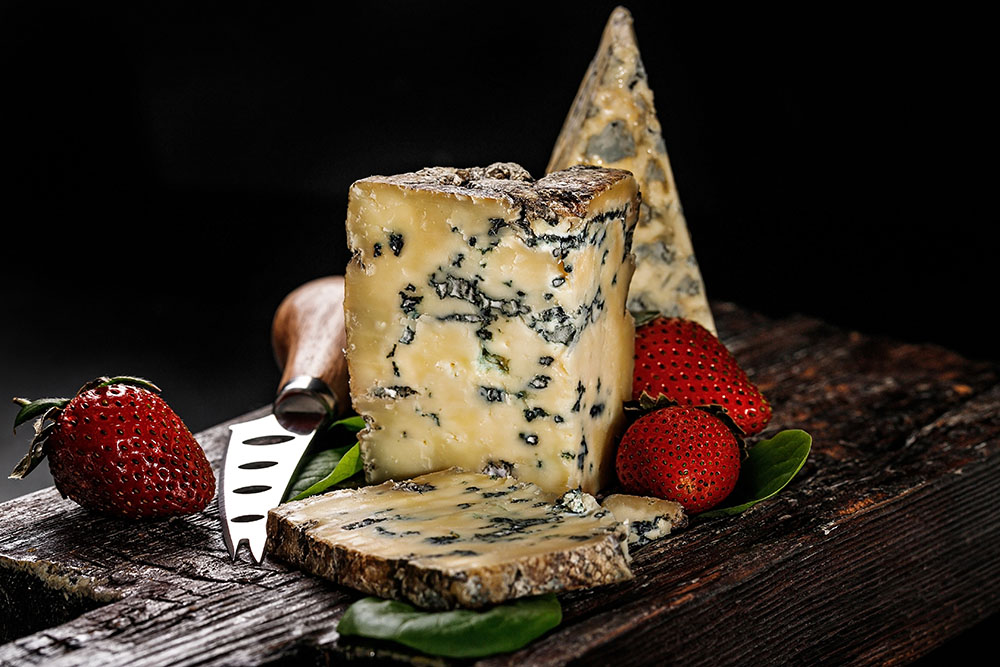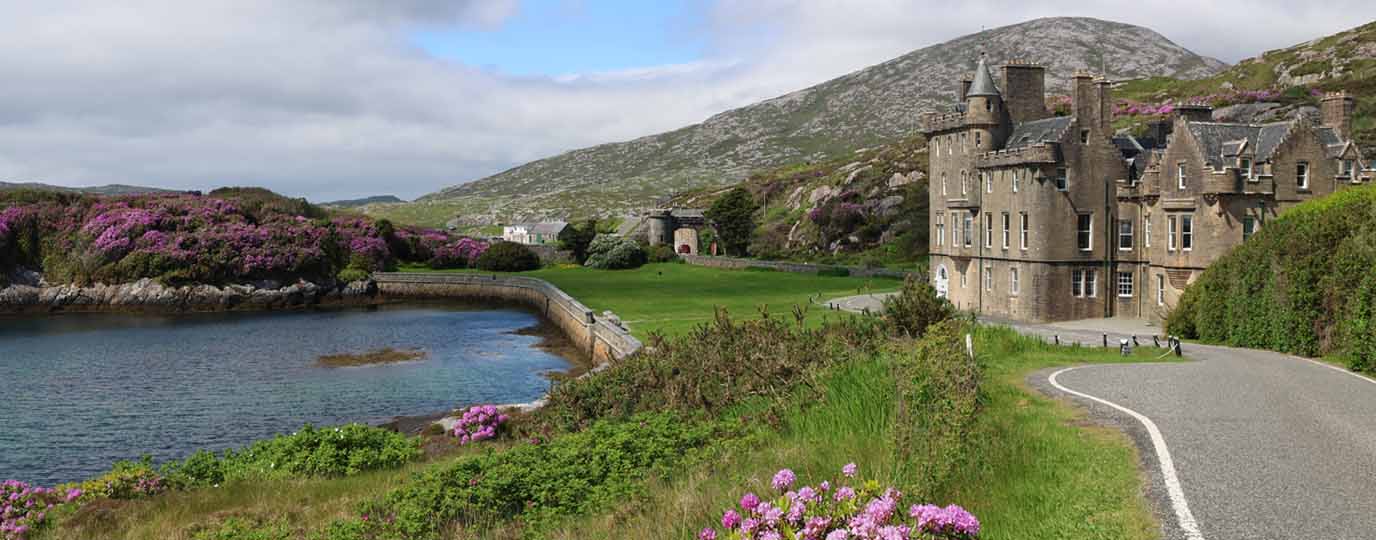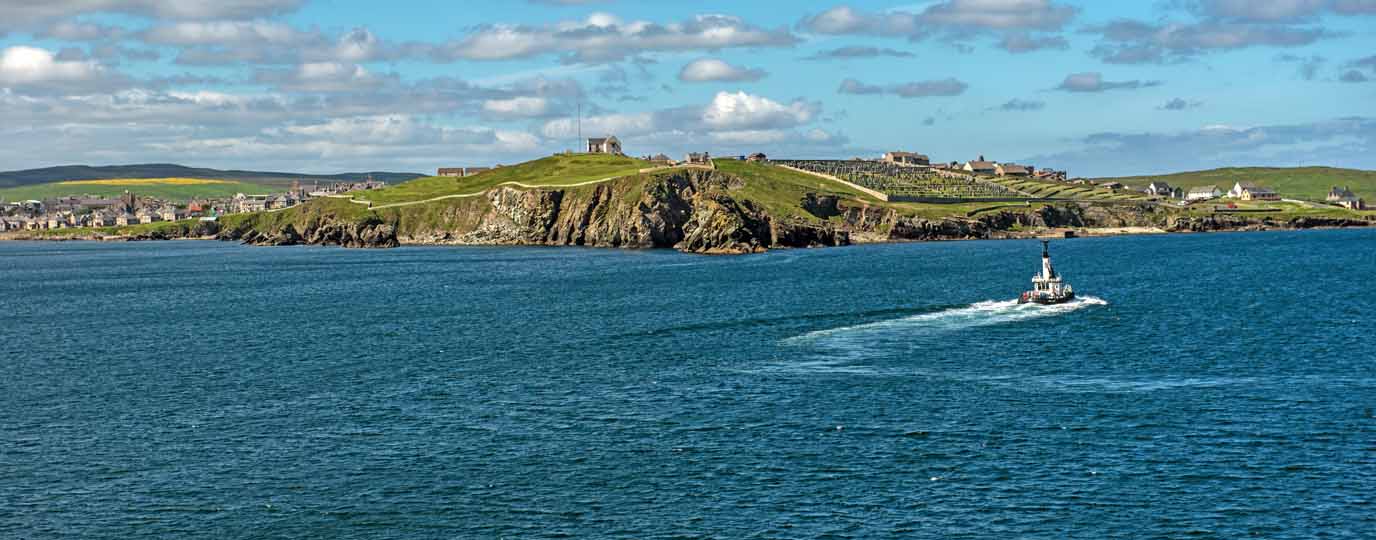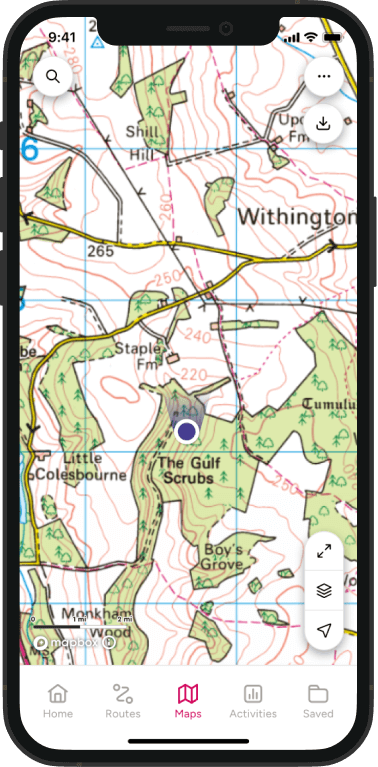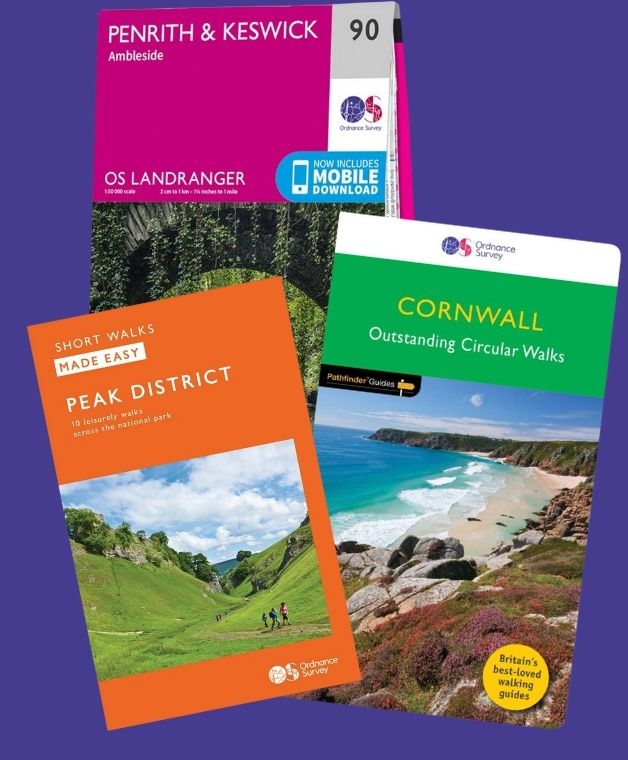Find the original meanings of British place names that use Scots source words with this extensive list of terms, along with pronunciation.
For more place name origins, take a look at our articles:
To see the location of each place, copy and paste the grid references into OS Maps.
Introduction to Scots

Scots is the name for the language of lowland Scotland. It is a Germanic language, closely related to English. It developed from the northern Old English (or Old Northumbrian) that was introduced into south-east Scotland (south of the Forth) from the 7th century AD onwards, as the kingdom of Northumbria expanded northwards. It was reinforced later by northern English that had been exposed to strong Norse influence after the Norse (Danes and Norwegians) occupied what is now Yorkshire and Cumbria. It started to be more widely spoken in eastern Scotland, north of the Forth, in the 12th century; by the early 15th century it was well established as the language of the Scottish court and parliament; and by the end of the middle ages (that is by about 1500) it had superseded Gaelic in almost all the southern and eastern lowlands. It was introduced into the Northern Isles (Orkney and Shetland) in the later middle ages, and by the 18th century it had superseded the local Norse language (Norn), which, however, has left its strong mark on the Scots spoken in those islands.
When it was first introduced into Scotland north of the Forth the language now known as Scots was described as ‘Inglis’, and it did not start being described as ‘Scottis’ until the late middle ages. In southern Scotland (south of a line running between the Firths of Clyde and Forth) it is sometimes difficult to distinguish place names that were coined in the post-1100 period from those that date from the earlier Northumbrian occupation, which are referred to as Old Northumbrian, Old English, or Anglian.
While the bulk of the more important place names in the Scottish Lowlands, such as those of settlements and parishes, are either of Celtic origin (Gaelic, Pictish, British), or, in the south-east, of Old Northumbrian origin, Scots place names predominate on detailed maps of almost any part of this Lowland area. This is because most of the surviving names of the smaller hills, burns, bogs and other minor features, as well as later settlements, were coined within the Scots-speaking period. This applies especially to divisions of older estates or landholdings that have adjectives known as ‘affixes’ attached to them to describe the various divisions.
Typical affixes are west(er), east(er), nether, laigh, heich or high, over, meikle, and so on. All of these are Scots, but mostly attached to place names that are much earlier. Such affixes usually describe the position or size of different divisions of a settlement-area relative to each other. However, they can also describe the nature of the land typical of the particular division.
For example, the extensive lands of Cairnie (a Celtic name) north of Cupar in Fife were divided early in the Scots-speaking period and have come down to us with Scots affixes such as Hillcairnie NO3618, Lordscairnie NO3517, Myrecairnie NO3617, and Newcairnie NO3519. More typically, and probably of slightly later date, the various features of the divisions of an old holding are expressed by such Scots compound nouns as ‘Hilton (hilltoun) of’, ‘Bogton (bogtoun) of’, ‘Newton (newtoun) of’, as in Hilton of Culsh NJ8748, Aberdeenshire. Hilton of Culsh distinguishes it from other divisions of the lands of Culsh such as South Culsh NJ8847 (Scots south), Mains of Culsh NJ8848 (Scots mains of) and Milton of Culsh NJ8848 (Scots milntoun of).
The high number of Scots place name elements in names on modern maps of the Scottish Lowlands is obscured by two factors. Firstly, because of their close relationship, there are many elements that Scots shares with English, more precisely Scottish Standard English, the standard form of the English language spoken in Scotland. Because of the cultural and political dominance of English over the last few centuries it is often assumed that a place name element that is the same as English is English, when it is in fact Scots. Elements such as hill, side, and field, are as Scots as burn, brig, and brae, and belong to the very earliest layer of Scots place names. In areas of Northumbrian occupation (especially East Lothian and the eastern Borders) names with such elements as hill, side, field could even be as early as the 7th or 8th century.
The other factor that has obscured the high number of Scots place name elements on modern maps is the strong English influence on the written language over recent centuries. This was reinforced by the fact that when the Ordnance Survey first surveyed Scotland in the 19th century the language mould into which it was cast was Standard English rather than Scots. The result of all this has given a spurious, and often misleading, English veneer to Scottish place names. For example, places ending in Scots haugh have often been depicted as hall, or similarly the Scots word fa(w) rendered as fal. It has led to uncertainty as to whether a place name coined in the last 200 or so years should be defined as Scots or Scottish English.
What is the structure of Scots place names?
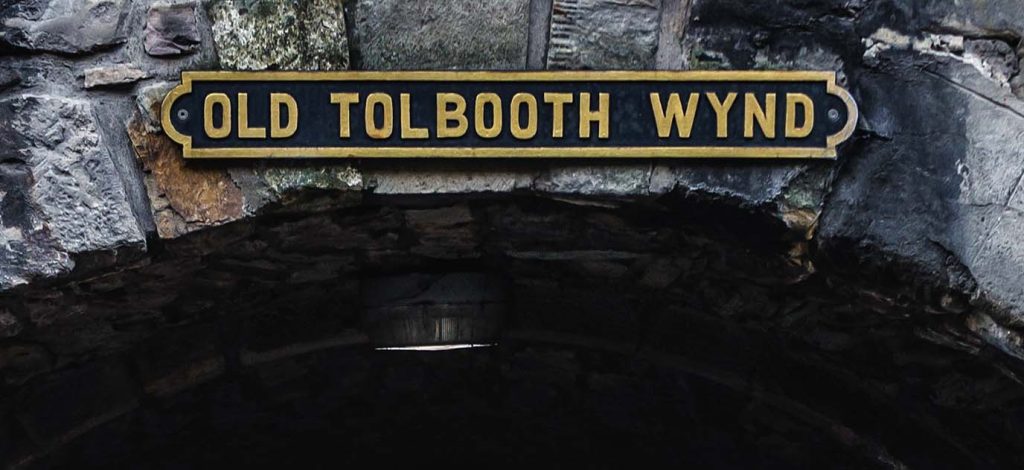
Place names can consist of a single generic element, usually a noun, either in the singular or the plural (Knowe NJ2835, Kaims NT2768). These are sometimes preceded by the definite article ‘the’ (The Bught NX8782). Most place names, however, are made up of more than one element, with a linguistic relationship between the elements. The closest relationship between two elements is known as a compound noun, two words put together to form a new word, which is then used as a place name. Examples of this are hatto(u)n ‘farm or settlement at or with a hall or main residence’, made up of Scots hall or ha ‘hall’, ‘main residence’ and Scots toun ‘farm’, ‘settlement’; hil(l)toun ‘farm or settlement on a hill or upland’, made up of Scots hill and Scots toun; and milntoun ‘mill farm or mill settlement’, ‘milton’, made up of Scots miln ‘mill’ and Scots toun. In effect these can be treated as single generic elements.
The generic can also be qualified by:
- an adjective, such as black in Blackford NN8909;
- another common noun put before the generic, such as bow ‘cattle’ in Bowmuir NS9942;
- a proper noun put before the generic, either a personal name, such as Thomas in Thomaston NS2409 or Mary in Maryhill NS5569 or an existing place name, such as Earnock in Earnock Burn NS6954; and
- a place name put after the generic (with or without the definite article), followed by of (often reduced to o), such as of Bute in Kyles of Bute NR9966 or o Muckhart in Yetts o Muckhart NO0001.
The element qualifying a generic element is called a qualifying or specific element. An element can be generic or specific, depending on how it is used in a name. For example, in Blackford NN8909 black is the specific, ford is the generic element; whereas in Fordmouth NS9850 ford it is the specific, mouth the generic element.
Scots and Gaelic
Scots and Gaelic have coexisted for many centuries, with Scots superseding Gaelic in the Lowlands in a long and gradual process. This means that many Gaelic words have been borrowed into Scots, a borrowing that is especially strong when it comes to topography or descriptions of landscape. Examples of such Scots words borrowed from Gaelic that are still in use, or at least recognisable even to non-Scots today, are ben, corrie, glen, loch, and strath.
How do you spell and pronounce Scot place names?
There is no generally accepted correct way to spell Scots, and it tends to vary by region, reflecting local pronunciation. For example, the vowel that in central Scotland is pronounced as a long open o (as Standard Scottish English awe) is pronounced in north-east Scotland as a long open a (as in Standard Scottish English shah, bra). The spellings haw and haa reflect this, and ha is commonly used to cover both. In earlier writing an apostrophe will be found in such words, for example, ha’, to indicate the loss of ll, but this is no longer acceptable. In general the glossary has taken as its headword the main form found in the Concise Scots Dictionary, giving alternative forms as well as cross references. This dictionary is derived from two major works, the 12-volume Dictionary of the Older Scottish Tongue (Scots before 1700) and the 10-volume Scottish National Dictionary (Scots after 1700). These two very important dictionaries are now available in an easily accessible form on the Dictionary of the Scots Language web site (www.dsl.ac.uk).
Vowels
One of the chief features of Scots vowels (as well as the vowels of Standard Scottish English) is that certain vowels are pronounced as a single sound (known as a monophthong), not two sounds put together (known as a diphthong), which is the case in South British Standard English (including English Received Pronunciation). If there is nobody around, say out loud, slowly, how the Queen would say ‘boat’: you will hear (at least!) two different vowels in there. In Scots the same word is pronounced with one single vowel, which can be described as a closed o, very much the sound of the German oo in Boot (‘boat’). In fact, the vowels of Scots are much closer to those of standard German than they are to those of South British Standard English.
Bearing all this in mind, it should be straightforward for anyone familiar with Standard English spelling to be able to pronounce all the vowels in the Scots elements in this index. However, the following should be noted:
- ow and ou: ow is pronounced as in Scottish Standard English ow in ‘how’; ou is pronounced as in Scottish Standard English oo in ‘look’, though sometimes it is pronounced ow, with doup generally pronounced ‘dowp’, and loup pronounced as ‘lowp’.
Consonants
With a few exceptions, the pronunciation of Scots consonants presents no difficulty to the speaker of most forms of British English. The exceptions are:
- ch and gh are both used indiscriminately to represent the guttural sound, well known in the Scottish English pronunciation of ‘loch’. Thus the final consonant of Scots laigh ‘low’ is pronounced the same as the final consonant in Scots loch, but is written both as laigh and laich.
- r is always pronounced, unlike in most forms of English English, where it is no longer heard as r after vowels.
- wh is pronounced something like hw; Scots (as well as Scottish Standard English) is careful to distinguish between wh and w, which in many forms of English have fallen together as w.
Scots place names glossary
Place names are made up of components which are referred to as elements. These elements are simply the words people used to describe a place or their response to their environment. A more complete background to Scots in place names, pronunciation and spelling can be found preceding Introduction.
This is a glossary of the elements from Scots most frequently found in the place names of Britain. It does not claim to be a comprehensive list of Scots elements found in Scottish place names, but it can claim to be the most comprehensive to date. Some elements which are the same as English have not been included. The meaning given is that which occurs in place names. Examples (with grid references) are given for each element.
To see the location of each place, copy and paste the grid references into OS Maps.
Abbreviations:
adj = adjective
n = noun
| Element | Meaning | Examples |
|---|---|---|
| aller n | alder | Aller Dean NT9847, Allershaw Burn NS9611 |
| auld adj | old | Auld Byres NS4219, Auld Mill NO4862 |
| balk n | alternative form of baulk | Howbalk NU0513 |
| baud n | thicket, thickly growing gorse | Bauds of Cullen NJ4766, Birkenbaud NO7296 |
| baulk n | unploughed rig in a cultivated field ofen used as a boundary | Baulk Hill NO0709, Baulk of Struie NO0709 |
| bell n | top of a hill, highest part of a slope; bell-shaped | Bell Craig NS5583, Bell Hill NY5397 |
| belt n | narrow plantation | Belt Hill NX6679, Belt of Muirtack NJ9938 |
| bent n | open ground or sandy hillocks covered with coarse, rush-like grass | Bent NO6972, Bent Bridge NS4359 |
| bicker n | fight, quarrel | Bicker Bridge NJ5959, Bicker Burn NJ6058 |
| bield n | place giving refuge or shelter | Bieldside NJ8802, Craigy Bield NT1756 |
| biggin n | building | Langbigging HY7644, Midbigging HY5103 |
| bink n | ledge in a cliff, shelf | Binks Hill NT4103, Black Binks NO2565 |
| birk n | birch-tree | Braes of Birkenhills NJ7445, The Birks NJ7261 |
| bog n | morass, bog | Bruntshielbog NY4082, Dean Mill Bog NT7571 |
| bonnet n | sof flat hat | The Bonnets NN8751, Blue Bonnet Hill NH5038 |
| bonnie adj | see bonny | Bonnie Doune NK0364, Bonnie View NT9550 |
| bonny adj | beautiful, pretty, handsome, attractive | Bonny Braes NX0669, Bonnyside NJ7915 |
| boo n | manor house, village (used in Northern Isles and parts of Caithness) | Boo Breck HY2716 |
| bought n | sheepfold; curve, bend High | Boughthill NY7886, The Bought HY5608 |
| bow n | cattle | Bowfield NS3958, Bowhouse NO2610 |
| bracken n | fern | Bracken Gill NY2994, Brackenhill NN9114 |
| brae n | slope of a hill; uplands (in plural form) | Brackeny Brae ND2349, Braes of Coul NO2857 |
| braid adj | broad | Braid Bog NJ4218, Braidhaugh NT5910, Braid Cairn NO4287 |
| brewster n | brewer | Brewster’s Burn NS8208, Brewsterwells NO4809 |
| brig n | bridge | Brig o’Turk NN5306, Blackburn Brig NJ8744 |
| broch n | circular prehistoric tower | Broch of Borwick HY2216, Oxtro Broch HY2526 |
| brock n | badger | Brock Burn NS5259, Brockholes NJ6307 |
| broo n | brow of a hill, overhanging bank of a hill | Broo Gill HU2678 |
| brow n | see broo | Throw Brow NT1012, Wedder Brows NT2209 |
| brunt adj | burnt | Brunt Rig NS7208, Bruntland HU5142 |
| bu n | bull | Bu Hill HY2204 |
| bucht n | see bought | Buchtrig NT7714, Bucht Slack NT0427, Bucht Burn NS5543, Bucht Sike NT7819 |
| bught n | see bought | Sheep Bught Rock NX7243, New Bught Hill NX1471, Todsbughts NS8372 |
| burgh n | Scots and Scottish English spelling of borough, town (originally with a charter) | Jedburgh NT6520, Edinburgh NT2876 |
| burn n | stream | Nether Burn NS9308, Newbigging Burn NJ6108 |
| burrow n | form of burgh | Burrowgate HY6123, Burrowley NJ9834 |
| butt n | ground disjoined from adjacent lands, strip of ploughed land, irregularly shaped ridge | Butt Hill NS7714, Longmeadow Butts NT5435 |
| cairn n | pyramid or pile of loose stones | Macbeth’s Cairn NJ5705, White Cairn NJ5931 |
| cald adj | see cauld | Cald Burn NO2977, Cald Well NY5382 |
| carlin n | old woman, old man | Carlin Burn NS5242, High Carlingcraig NS5639 |
| carse n | low land along river bank, flood plain | Carse Loch NX9184, Carse of Bayfield NH8073 |
| caul n | weir, dam | Old Caul Burn NY2371 |
| cauld n | see caul | Nisbetmill Cauld NT6524 |
| cauld adj | cold | Cauldwells NJ8056, Cauld Cleuch NT4601 |
| causey n | causeway | Causeyhead NS4346, Causeyport NO9198 |
| chingle n | gravel, shingle | Chinglebraes HY4208 |
| clash n | large hollow or cavity on hillside | Clash Burn NO7892, Clash of Wirren NO4975 |
| claver n | clover | Claver Hill NY7479, Claver Sike NY7379 |
| cleuch n | see cleugh | Corbie Cleuch NS8503, Chapel Cleuch NS8112 |
| cleugh n | gorge, ravine, cliff, crag | Cleugh of Tongue NX5253, Baron’s Cleugh NT1460 |
| clif n | cliff, clef, cave | Clifon HY5042 |
| clint n | cliff, crag, precipice | Clint Burn NY7279, Clintlaw NO2853 |
| close n | enclosed land, farmyard, narrow alley | Green Close NY2354, Howclose NX8775 |
| cloy n | see cleugh | Cloy Rig NX3281, Cloybank NS7779 |
| coble n | ferry boat | Coble Haugh NO0517, Coble House Point NO4619 |
| comb n | bosom of a hill, hollow in a mountain side | East Comb NO7047, Lishaw Combs NY5984 |
| corbie n | raven, crow | Corbie Craigs NS4509 |
| corby n | see corbie | Corby Linn NY5587 |
| corrie n | hollow on the side of a mountain or between two mountains | Corrie of Bellaty NO2460 |
| corse n | cross, market place, crossing place | Corse Burn NJ5507, Corse Sike NY3475, Corston HU3612 |
| cot n | small house, cottage | Sheepcot Hill NY0584, Washingcot Rocks NJ0852 |
| cote, cott n | see cot | East Cote Farm NY1255, Woodside Cott NH8307 |
| cotton n | small collection of farm-cottages | Cotton of Carnegie NO5241, Carriston Cotton NO3204 |
| cottown n | see cotton | North Cottown NJ7715, Upper Cottown NJ7615 |
| cove n | cave, cavern | Cove Harbour NT7871 |
| cowper n | horse dealer | Cowper’s Craig NJ8266 |
| craig n | rocky place | Swallow Craig NS7310, White Craig NO2175 |
| cran n | crane, heron | Cran Moss NX1033, Cranbog NJ8760 |
| craw n | crow, pen, pig-sty | Craw Stane NJ4926, Craw Wood NY1379 |
| crof n | land of superior quality, kept constantly manured and under crop, smallholding | Westburn Crof NJ9420, White Crof NM9336 |
| croo n | small yard, sheep pen | Billia Croo HY2210, Croo Field HU2051 |
| crook n | from cruik: bend in a river, curved or crooked piece of ground | Avoncrook NS9472, Crook of Devon NO0300 |
| crooked n | bent, winding | Crooked Bank NS9010, Crookedshaws NT8025 |
| cutty adj | short | Cutty Cleuch NY2279 |
| dass n | ledge on a hillside or cliff | Green Dass NX9198, The Dass NT4750 |
| daugh n | see davoch | Daugh of Aberlour NJ2842 |
| davoch n | measure of land | Easter Davoch NJ4607, Davoch of Grange NJ4851 |
| dean, den n | deep wooded valley (dean – south of the Forth, den – north of the Forth) | Dunglass Dean NT7671, Easter Denhead NO2441 |
| dess n | see dass | Desswood NO5799 |
| dod n | bare hill with rounded top | Deuchrie Dod NT6272, Friardykes Dod NT6569 |
| dodd n | see dod | Dodd Sike NY7079, Great Dodd NY7992 |
| doocot n | dovecot | Doocot Den NJ7863, Doocot Point HY4716 |
| doup n | bottom, end of anything, buttocks, backside | Little Doups NJ8361, The Doups NT6536 |
| drum n | long narrow ridge or knoll | Disdow Drum NX6156, South Drum NO5359 |
| dub n | small pool of water, puddle | Waterless Dub NT2394, Davy’s Dub NS1855 |
| dyke n | stone or turf wall | Deer Dyke NO6676, Dykefoot NO4781 |
| easter adj | eastern(-most), lying to the east | Easter Anguston NJ8201, Easter Balmoral NO2694 |
| elbuck n | elbow | Deil’s Elbuck NX9393 |
| eller n | elder | Eller Bog NX9385, Ellerslee NX9785 |
| fal adj | see faw | Falkirk NS8781, Falfield NO4408 |
| fank n | enclosure | Fank Wood NS0878, Fank Burn NN7024 |
| faugh n | fallow ground | Longfaugh NJ8322, Faugh NS9312 |
| fauld n | part of the outfield of a farm manured by penning cattle on it, fold | Shuttlefauld NO1109, Stane Fauld NX2768 |
| faw adj | variegated, of different colours | Faw Hill NT6213, Faw Side NY3596 |
| fell n | rocky hill, hill-moor, high-lying ground | Fell Hill NX2990, Garheugh Fell NX2751 |
| fey n | small field, crof | Kirk Fey NX1238, Fey Wood NX8977 |
| firth n | estuary, inlet of the sea | Firth of Tay NO3727, Firth of Lorn NM7628 |
| flag n | flagstone | Horse Flags HY4849, Fowl Flag HY5055 |
| flosh n | see flush | Flosh Burn NT5303, Floshknowe NY0076, Floshend NY3168 |
| flow n | morass, peat bog | Fala Flow NT4358, Anderside Flow NS6233 |
| flush n | boggy ground where water lies on the surface | Flush Hill NX0067, Tranew Flushes NS3407 |
| foggy adj | mossy, spongy | Foggy Moss NJ4654, Foggyleas NO2414 |
| forest n | large area of land not necessarily wooded, originally used for deer hunting | Forest Lodge NJ0216, Garadhban Forest NS4086 |
| forking n | division of a river into one or more streams | The Forkings NJ6421, Forkings of Raith NS2962 |
| fowl n | bird of any kind | Fowl Craig HY5054, Fowl Taing HU5179 |
| frith n | wood, clearing in a wood | Frithfield NO5507, Frithbie NY2065 |
| gair n | strip of green on a hill, patch of marshy ground in heather | Gair Burn NY6279, Gair Shank NT2809 |
| gairy n | steep hill, precipice | Gairy Lochs ND4685, Kittlegairy Burn NT2741 |
| garth n | shallow shingly part of a river | Garthbanks HU3612, Garthdee NJ9103 |
| gate n | road | Gateside HU2978, Canongate NT2673 |
| girth n | sanctuary | Girthgate NT5043 |
| glack n | narrow valley | West Glacks NJ6039, The Glack NH7856 |
| gled n | buzzard, kite | Upper Gledfield NH5790, Gled Brae NX7893 |
| glen n | valley | Friar’s Glen NO6879, Sma’ Glen NN9029 |
| gore n | strip of land at the side of a field | Gore Bridge NT6942, Gore Moss NX9973 |
| gote n | drain, ditch, narrow inlet of the sea | Tod’s Gote ND3544, Whitemoss Gote NS2958 |
| gouk n | see gowk | Gouknest NS4047, Gouk Hill NS3482 |
| gowk n | cuckoo | Gowkhall NT0589, West Gowkhill NJ9046 |
| grain n | branch of a river, arm of a valley | Willow Grain NS8412, Wolf Grain NO4388 |
| green n | village green, grassy ground surrounding a house | Woodgreen NS3044, Allerdean Greens NT9845 |
| grip n | from gruip: drain | Millgrip HY6123, Rough Grip NJ3605 |
| gullet n | gully, ravine | Gullet Spout NX9195, The Gullet NY4887 |
| gutter n | mud, mire, puddles | Thorter Gutter NT0217, Black Gutter NX4185 |
| hack n | wild, rocky stretch of moorland or moss | Hack Field HU1756, Hackland HY3920 |
| hag, hagg n | hollow of marshy ground in a moor, hillock of firmer ground in a bog | Hag Brae NO5050, Hagg Dean NU1627 |
| hally adj | holy | Hallywell Rig NT6953 |
| hame n | home, settlement | Cauldhame HU3938, Tyninghame NT6079 |
| hard n | piece of firm ground as opposed to a bog | Wester Hardmuir NH9456, Burn of Hardwall HU3769 |
| hass n | see hause | Katie’s Hass NT2941 |
| hatton n | farm or settlement with a hall or main residence (a combination of Scots haa (hall) + toun) | Easter Hatton NO1947, Merryhatton NT5479 |
| haud n | overhanging bank of a stream, retreat | Haudgate Hole NT8655, Haud Yauds NT8368 |
| haugh n | river-meadow, level piece of ground beside a stream | Haugh of Glass NJ4239, Haughhead HY4010 |
| hause n | gap, opening, neck of land, head of a pass | Hause Burn NX8762 |
| head n | see heid | Herston Head ND4191, Heugh Head NO5098 |
| heck n | rack or grating for fodder, for drying fish, or across a stream | Hunterheck NT1004, Old Haiks NO6111 |
| heid n | head, highest part of a valley, summit of a hill | The Deil’s Heid NO6741 |
| hemmel n | from hammel: covered shed for cattle | Blue Hemmel NY7475, Hemmel Knowe NT7759 |
| heuch n | precipice, crag, cliff, steep bank | Heuch of Coul NN9712, Little Heuch Law NT7816 |
| hip n | projecting piece of land | Lamahip NO5592, Hanginghip Plantation NY2473 |
| hirst n | hillock, knoll, barren, unproductive piece of ground | Netherhirst NY4473, Sandy Hirst NT6379 |
| hog, hogg n | young sheep | Hog Burn NT3918, Hog Lairs NT9113 |
| hole n | cover, shelter, hole | Brockholes NJ6307, Low Todhole NY6298 |
| holl n | see howe | East Holl NJ1456, Holl Burn NO2103 |
| hollin n | holly | Hollin Burn NT7803, Hollinsheugh Hill NU1519 |
| holm n | from howm: stretch of low-lying land beside a river | Lyneholm Cleuch NY2791 |
| hope n | small enclosed upland valley, hollow among the hills; bay | Hopehead Burn NT1438, St Margaret’s Hope ND4494 |
| howe n | hollow depression, low-lying pieceof ground | Hopeless Howe NX3366, Howe Moss NJ7641 |
| howie adj | full of hollows | Howierig NS8478, Howie Sound HY4631 |
| jingle n | see chingle | Deil’s Jingle NY2795, Near Jingle Sike NY4986 |
| kail n | cole, a variety of cabbage | Kail Yard ND4996, Kail Cairn NT3825 |
| kaim n | see kame | Maiden Kaim NO8883, North Kaim NS3461 |
| kame n | comb, long narrow steep-sided ridge, crest of a hill | Burn of the Kame HU4785, Easter Kame HU3788 |
| kip, kipp n | projecting point of a hill, peak | Hyndhope Kip NT3519, Kipps Farm NS7366 |
| kippie adj | hilly, having kips | Kippie Island NT8844, Kippie Knowe NT7716 |
| kirk n | church | Kirkhill NK0152, Kirkmichael NO0860 |
| kirn n | churn, natural feature resembling a churn | Wester Kirn NJ2000, Auld Wife’s Kirn NT0500 |
| knab n | see knap | The Knab HU4840 |
| knap n | hillock, knoll, rounded knob, lump, bump | Marnock Knap NO8277, Square’s Knap NO8183 |
| knock n | hillock | Big Knock NT1017, East Knock NO4876 |
| knowe n | hillock, knoll, protuberance | Lamb Knowe NS7917, Lang Knowe NS9830 |
| kyle, kyles n | sound, strait | Kyle of Durness NC3765, Kyles of Bute NS0472 |
| lade n | watercourse leading to a mill | Mill Lade ND3648, Distillery Lade NR3358 |
| laigh n | from laich: stretch of low-lying ground | Laigh Drumdow NS2105, Laigh Riggend NS7669 |
| laigh adj | low | Laigh Hill NT1228, Laigh Wood NX1585 |
| lair n | mud, mire, bog, quicksand; place where animals lie down, enclosure | Hog Lairs NT9113, Nouts’ Lair NO7586 |
| land n | land, the fields, countryside | Meikle Kirkland NX8269, Woodlands NH8351 |
| lane n | marshy meadow; sometimes English ‘lane’ | Rushy Lane NT0011, Shiels Lane NX1970 |
| lang n | long, tall | East Langton NS4051, High Langmuir NS3941 |
| latch n | mire, swamp | Little Latch NO4538, Latchfold NJ8146 |
| law n | round, conical ofen isolated hill | Lucklaw NO4120, Macbeth’s Law NO2034 |
| lea n | grass-land | Oaklea HY4506, Rashboglea NJ8645 |
| lee n | see lea | Netherlee NS5758, Merrylee NS5659 |
| ley n | see lea | Langley NJ5156, North Whiteley NJ4347 |
| links n | grass-covered dunes | Cullen Links NJ4967, Fisherrow Links NT3473 |
| linn n | waterfall, cataract, deep, narrow gorge, shrubby ravine | Flatt Linn NS6451, Furmiston Linn NX5992 |
| lint n | flax | Lint Brae HY4006, Lintdub Moss NY2381 |
| loan n | right of way for stock to common grazing, lane, small common ground | Braid Loans NY6477, Byres Loan NT3865 |
| loaning n | lane, bypath, right of passage for animals by means of a loan | Brownrigg Loaning NX9976, Cadgers’ Loaning NY1288 |
| lodge n | hunting lodge, house, fishing-hut | Drumbuie Lodge NO0344, Dryfe Lodge NY1893 |
| lone n | see loan | Lone NJ0748, Moat Lone NT2602 |
| loop n | winding of a river, lake or glen | Thumb Loop NX3386, Upper Loop NJ7544 |
| loup n | the jump, the leap, narrow part of a river, small cataract | Wild Mare’s Loup NO7186, Black Loup NX3778 |
| lug n | corner, recess, ear | The Lug HP6317, Banklug NS4456, Blacklug NJ4137 |
| mains n | home farm on an estate | Buittle Mains NX8160, Carberry Mains NT3570 |
| meikle adj | see muckle | Meikle Auchrae NX6494, Meikle Cat Cairn NJ3515 |
| mere n | small pool | Mere Cleuch NT1008, Leishmere NH4040 |
| mickle adj | see muckle | Mickle Corum NN8502 |
| midden n | refuse heap | Windydoors Midden NT4142, Blackmiddens NJ4226 |
| mire n | peat-bog | Blackmire NJ1050, Bloody Mires NX5388 |
| mirk adj | dark, obscure, black | Mirk Bank NY2791, Mirk Gill NY1199 |
| moor n | heath, unenclosed upland usually covered in heather | Moor of Dallachy NJ3663, Muckla Moor HU4367 |
| moss n | mossy ground, moorland | North Meiklemoss NK0331, Nutberry Moss NY2668 |
| mote n | mound, hillock, embankment, motte | Straw Mote NS7917, Bardrochwood Mote NX4565 |
| mouth n | entrance to an enclosed place, mouth of a burn or river | Pool Mouth NK1446, South Mouth HU6871 |
| muckle adj | great | Muckle Burn HY3411, Muckle Ayre HU4655 |
| muir n | rough grazing | Barr Muir NS5833, Blackiemuir NO6971 |
| mull n | headland, promontory | Blue Mull HP5504, Mull Glen NX1331 |
| nab n | see knap | Nabhill NU0046, Rock Nab NU1720, The Nab HU2148 |
| ness n | headland | Kinghorn Ness NT2786, Lamb Ness HY6821 |
| nether adj | the lower-situated of two places, lower | Mid Netherton NS5858, Nether Achie NX6277 |
| neuk n | corner, projecting point of land into the sea, a remote place | Park Neuk NJ1855, Roughneuk NS2704 |
| nick n | narrow gap in a range of hills | Saddle Nick NS8203, Southerly Nick NT4038 |
| nook n | see neuk | Craignook NY5178, Parknook NJ4722 |
| noup n | knob | Kame of Riven Noup HU3631, Little Noup Head HY5539 |
| nowt n | black cattle | Nowt Bield HY2301, Nowt Rig NT1711 |
| paddock n | small farm | Paddockfield NH5015, Paddocklaw NJ6661 |
| pan n | in coastal areas referring to salt pans | Pan Rocks NS3131, Salt Pan Bay NW9667 |
| park n | enclosure for hunting or agriculture | Fowberry Park NU0227, Parkhill NJ4460 |
| path n | from peth: steep track leading through a ravine | Stoneypath NT6171, Moine Path NC5155 |
| peel n | fortified tower (Borders), fence, stockade, palisade | Leitholm Peel NT7843, Peel Hill NT4628 |
| peerie adj | small (Northern Isles only) | Peerie Breast HY4145, Peerie Hill HU5183 |
| perk n | see park | Perkhill NJ5705 |
| pike n | cairn of stones on the highest part of a hill | Pike Cairn NT3424, Pikestone Sike NY6990 |
| pin n | point, peak, summit | Pin Stane NS9410 |
| plain n | land free from trees, unwooded, piece of level ground | Blowplain NX6677, High Plains NY4274 |
| plea n | quarrel | Plea Moss NY2689, Plea Knowe NY2296 |
| port n | harbour, gate, gateway | Port Laing NT1381, Port of Rossdhu NS3589 |
| pow n | marshy place, slow-running stream | Bogmill Pow NO2726, Carse Pow NX9859 |
| pund n | enclosure for animals, especially stray animals | Green Pund HP6207, Lap Pund HP6107 |
| pyat n | magpie | Pyat Cleuch NY1591, Pyat Side NT3737 |
| pyet n | see pyat | Pyet Craig NX1386, Pyet Knowe NS2450 |
| quaw n | bog, marsh | Eildon Quaw NT3512 |
| rash n | rush | White Rashes ND3463, Rashfield NS1483 |
| rashie adj | covered with rushes | Rashie Sike NT2312, Rashy Grain NO7485 |
| raw n | ridge of ground, street, row | Blackraw NT0865, Cairnraws NX6274, Langraw NT5811 |
| reesk n | wet, boggy land, morass | The Reesk NJ4436 |
| reisk n | see reesk | Reisk NK0556 |
| rig, rigg n | ridge, long narrow hill, cultivated strip of land | Throw Rig NS8811, Tod Rig NY4395, RiggendNS7670 |
| risk n | see reesk | Risk NS3759, Riskend NS7378 |
| rispie n | long coarse grass | Rispie Cleugh NY5281, Rispie Lairs NT1412 |
| rounall n | see roundel | Marchfield Rounall NX9877, Beech Rounall NO0519 |
| roundel n | anything circular | The Roundel NN1404, West Roundel NS9646 |
| row n | see raw | Stone Row NH9354, White Row NX3495 |
| run n | from rin: stream, land beside a stream | Chair Run NC7615, Well Run NC8704 |
| sauchie n | place abounding in willows | Sauchie Banks NY1396, Sauchie Wood NS5383 |
| scad, scald adj | see scawd | Scad Cairns NO3160, Scald Law NT1961 |
| scalp n | see scaup | Scalp Rock NG2963 |
| scar n | see scaur | Scar Brae NY0984, Scar Point NY0065 |
| scarf n | cormorant, shag | Scarf Craig NJ2271, Scarf Rocks NC9666 |
| scart n | see scarf | Scart Isle NR6320, Scart Rock NS2144 |
| scaud adj | see scawd | Scaud Knowe NT9514, Scaud Law NT6801 |
| scaup n | bank for shellfish in the sea, infertile stony ground, small bare hill | Scaup Burn NY6599, Scaup Pikes NY6598 |
| scaur n | steep, eroded hill, cliff face, long ridges running from cliff at low tide | The Scaurs NJ4738, Scaur Wood NJ7308 |
| scawd adj | having bare patches, bare of vegetation | Scawd Bank NY4393 |
| scaw’d adj | see scawd | Scaw’d Fell NT1402, Little Scaw’d Law NS9104 |
| score n | see scaur | Inner Score HU5145, Meikle Score ND2175 |
| scree n | mass of small loose stones on a steep hillside, narrow steep hollow | Scree Gully NO2774, Scree Road NC4300 |
| scroggie adj | covered with stunted bushes | Scroggiehill NO1542, Scroggie Hall NX6779 |
| scrogs n | rough land covered with stunted bushes | Scrogs Field NT1841, Crossford Scrogs NX8388 |
| scug n | shelter, slope of a hill | Scug Wood NJ3642, Scuggate NY4474 |
| seggy adj | overgrown with sedges or reeds | Seggy Burn NS5916, Seggycrook NJ5252 |
| shade n | see shed | Sick Man’s Shade NO7262, Bradeshade NO7379, Broadshade NJ8107 |
| shank n | projecting point of a hill, slope of a hill | Shank Glen NS2915, Shank of Auchnafoe NO5073 |
| shaw n | small wood, thicket | Shaw Wood NS4961, South Cowshaw NY0284 |
| shed n | strip of land, distinct separate piece of land | Upper Broadsheds NK0358, Bandshed Moss NJ7513 |
| shiel n | hut, shepherd’s summer shelter | Shiels NJ9319, Mid Foulshiels NS9864 |
| shield, shields | see shiel | Shepherdshield NY7674, Shields Rig NT0453 |
| shin n | shin, ridge or steep face of a hill, projecting part of a piece of high ground | Whiteshin NK1038, The Shin ND0822, Brown Shin NS9107 |
| short adj | low, short | Shortrighead NS8371, Short Hope NT3801 |
| shot n | division of land | Heathershot NS7697, Cothall Shot NJ0056 |
| side n | hillside; also English ‘side’ | South Suttieside NO4651, Stony Side NT6458 |
| sike n | see syke | Bushy Sike NS7408, Tod Sike NY2984 |
| siller n | silver, money | Siller Hill NJ6462, Siller Stane NT5532 |
| sink n | low-lying area where water collects | Brierysink NS3053 |
| skelly n | rock, skerry | Bailiff’s Skelly NK0663, Black Skelly NO4182 |
| skew n | twist, turn, state of ruin | Skew Skerry HU3789, Skew Bridge NS6425 |
| slack n | hollow between hills, pass, pit, hole | Thief’s Slack NJ5421, Wain Slack NT6762 |
| slag n | morass | Slag Hill NS9880 |
| slap n | pass, shallow valley between hills | Slap of Setter HY3415, Thunderslap Hill NJ3033 |
| sloch n | see slock | Berrysloch NO5894 |
| slock n | hollow between hills | The Wolf Slock NX4589 |
| slot n | pit, hole in the ground | Slot Burn NS6832, Buittle Slot NX8161 |
| smiddy n | smithy | Smiddyhill NJ9755, Backsmiddy NJ7745 |
| snab n | steep, short slope | Buckstone Snab NT2469, Coldwell Snab NY4897 |
| sneck n | notch, dip in the ground, saddle between hills | Red Sneck Burn NJ3123, Sneck of Corinch NO3564 |
| snout n | projecting point of land | Black Snout NX9199, Burnsnout NH9456 |
| souter n | cobbler, shoemaker | Outer Souter Cleuch NT8419, Souterford NJ7822 |
| spout n | waterfall, boggy spring | Spout of Balbowie NS6487, The Black Spout NN9557 |
| stab n | see stob | Stab Hill NX1472 |
| stane n | stone | The Lecker Stane NO0803, The Nine Stanes NO7291 |
| stank n | ditch, pond, moat | The Stank NT8128, Black Stank NJ2351 |
| starry adj | covered in sedges | Starryheugh Farm NX9575, Starry Geo HY5237 |
| stead n | farmhouse and buildings | Low Greystead NY7785, Lynestead NY5478 |
| steel n | steep bank, hill-ridge | Steelend NT0593, Cockston Steel NT6671 |
| stell n | deep pool in a river, enclosure for sheep, clump or plantation of trees, shelter | East Stell NT2983, Fir Stell NT5046 |
| steps n | stepping stones | Foulsteps NU0930, Black Steps NX3878 |
| stey adj | steep, very steep | Stey Brae NX6679, Stey Fell NX5560 |
| stob n | stake, post | Easter Stobwood NS9553 |
| stot n | young bull, ox | Stot Hill NJ5903, Stotfaulds NO4939 |
| straik n | long, narrow tract of land | Broadstraik Farm NJ8106 |
| strand n | gutter, channel, drain for water, rivulet | Whitewell Strand NT9116, West Strand NS5905 |
| strath n | broad flat river valley | Green Strath NJ4320, Helshetter Strath NC9661 |
| stripe n | narrow tract or strip of land, rivulet | Auchmadies Stripe NJ3247, Black Stripe NJ4754 |
| swart adj | black, dark | Swart Howe HY5003, Swartmill HY4846 |
| swine n | pig | Swine Burn NU0811, Swine’s Cleugh NT3351 |
| swire n | hollow between hills, level place near the top of a hill | Swire Knowe NT4700, Windy Swire NT4700 |
| syke n | marshy hollow, esp. one with a stream, small burn | Threepsikes NT0294, Ormscleugh Syke NT4651 |
| tack n | farm, leaseholding | Tackhouse NS6443, Upper Tack NJ8916 |
| tae n | toe, branch of a drain | Broad Tae NT0712, Hard Tae NT7607 |
| taf n | homestead and its land | Evertaf HY4551, Tafs HU6091 |
| tail n | lower end of a field | Laidler’s Tail NU0737, Wester Tail HU5999 |
| tammock n | see tummock | Cairn Tammock NX5764 |
| tap n | head, hill, heap | Craw Tap HU2550, Bruntwood Tap NJ6621 |
| tappin n | peaked top of a hill, cairn on a hilltop | The Tappins NX3596, Welltrees Tappin NS7504 |
| tappit adj | hooded, crested | Tappit Knowes NS8202 |
| thorn n | hawthorn | East Thorn HY4846, Hardthorn NX9477 |
| threap,threep, threip n | argument, dispute | Threapland Wood NJ2959, Threepsikes NT0294, Threip Moor NX9595 |
| tod n | fox | Low Todhill NS4343, Tod Fell NX7959 |
| toe n | see tae | Toe Head NF9594, West Toe HY5640 |
| tof n | see taf | Colbinstof HU6193, Easter Tofs NS8635 |
| toun n | township, farm | Upper Carlestoun NS6175, West Westertoun NS8667 |
| trough n | from troch: channel or bed of a river, valley | Green Trough NS8911, Castletrough BurnNY0191 |
| tummock n | small hillock | Dogtummock NX9460 |
| type n | low conical hill | White Type NT0511, The Types NX5073 |
| waird n | see ward | Backwaird NJ7417, Swinewaird NO8680 |
| wall n | well, wall | Wall Sike NY6099 |
| ward n | piece of pasture, division, beacon hill | Littleward NJ5139, Brae Ward NS3158 |
| water n | stream, river, rivulet | Pow Water NN8919 |
| wedder n | wether, castrated ram | Wedder Law NS8828, Wedderhill NO8797 |
| wee adj | little | Wee Cleuch NS8806, Wee Doon NX4871 |
| weel n | pool, deep still part in a river | Weel Pool NS4308, Barmuck Weel NS3106 |
| wester adj | western(-most), lying to the west | Wester Aberdour NT1885, Wester Bows NN7306 |
| wham n | broad valley through which a stream runs, marshy depression | Wham Rig NS6905, Gillwham NX9265 |
| whaup n | curlew | Whaup Crags NY6578, Whaup Knowe NX9793 |
| whin n | gorse | The Whin NT4739, Wester Whin NS8668 |
| whinnie adj | gorse-clad | Whinniemuir NO1225 |
| wiel n | see weel | McKie’s Wiel NX3776, Quaking Ash Wiel NX3775 |
| wynd n | long, narrow lane frequently curving | Cow’s Wynd NS7810, Stonywynd NO5614 |
| yair n | fish trap | Yair Hope NT4333 |
| yard n | yard, garden | Corseyard NX5948, East Grassyards NS2264 |
| yearn n | eagle | Yearn Cleuch NS8807, Yearn Gill NT0120 |
| yella adj | yellow | Yella Moor HU4466 |
| yett n | gate, natural pass between hills | Upper Yetts NO0001, Whiteyett NY2494 |
| yird n | earth | Fox Yird NS6000 |
| yonder adj | more distant | Yonderton NJ8452, Yonderhaugh NS9082 |
Further information and references
Top image: Kyle of Durness at low tide © Copyright Dr E H Mackay, Creative Commons via Geograph Project
- More information on Scots, Scots dictionaries, and links to other relevant sites, can be found on the Scottish Language Dictionaries website www.sldl.org.uk
- As noted above, the Dictionary of the Scots Language website, www.dsl.ac.uk, brings together the Dictionary of the Older Scottish Tongue and the 10-volume Scottish National Dictionary
- Details of books on Scottish place names can be found on the website of the Scottish Place‑Name Society/Comann Ainmean-Àite na h-Alba www.spns.org.uk
See the collection of guides to place names in Britain:
